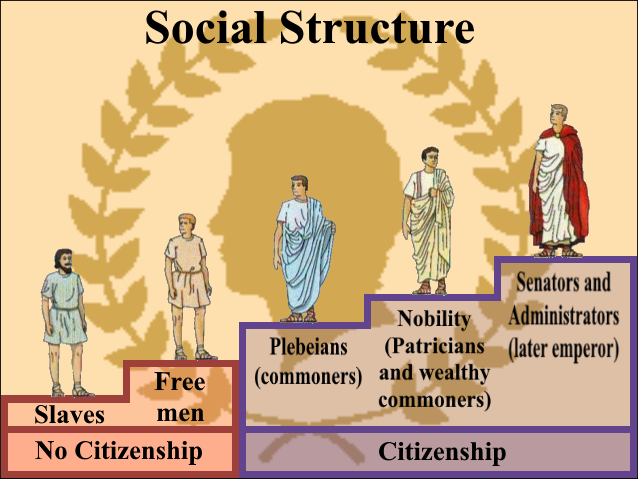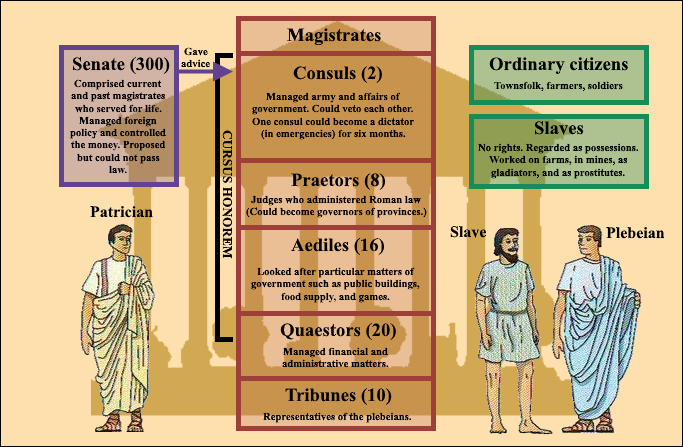

"A man's worth is no greater than his ambitions."
- Marcus Aurelius -


"A man's worth is no greater than his ambitions."
- Marcus Aurelius -



Like many civilizations from around the world, the Romans had a class social structure that differentiated between the rich and the poor. There was an upper class that consisted the nobility rank and higher. The lower class consisted of plebeians and lower.
During the republic times, the senators and administrators led a strong government. Later, during the imperial times, the emperor had that same role. The emperor, senators, and administrators enforced laws and made decisions on their military campaigns. Senators and administrators carried our the emperor's decisions on the Roman Empire's government and campaign. Like many nobles, the emperor often wore purple clothes because purple is a rare color found in nature.
Nobles and other wealthy people owned large amounts of land where they hired slaves that produced their products and managed their palaces. Anyone who was a noble or higher had privileges that commoners and the lower class lacked.
Poorer people had fewer rights or power in the Roman Empire. There were more poor people than there were rich people. They worked as farmers, artisans, and servants.

